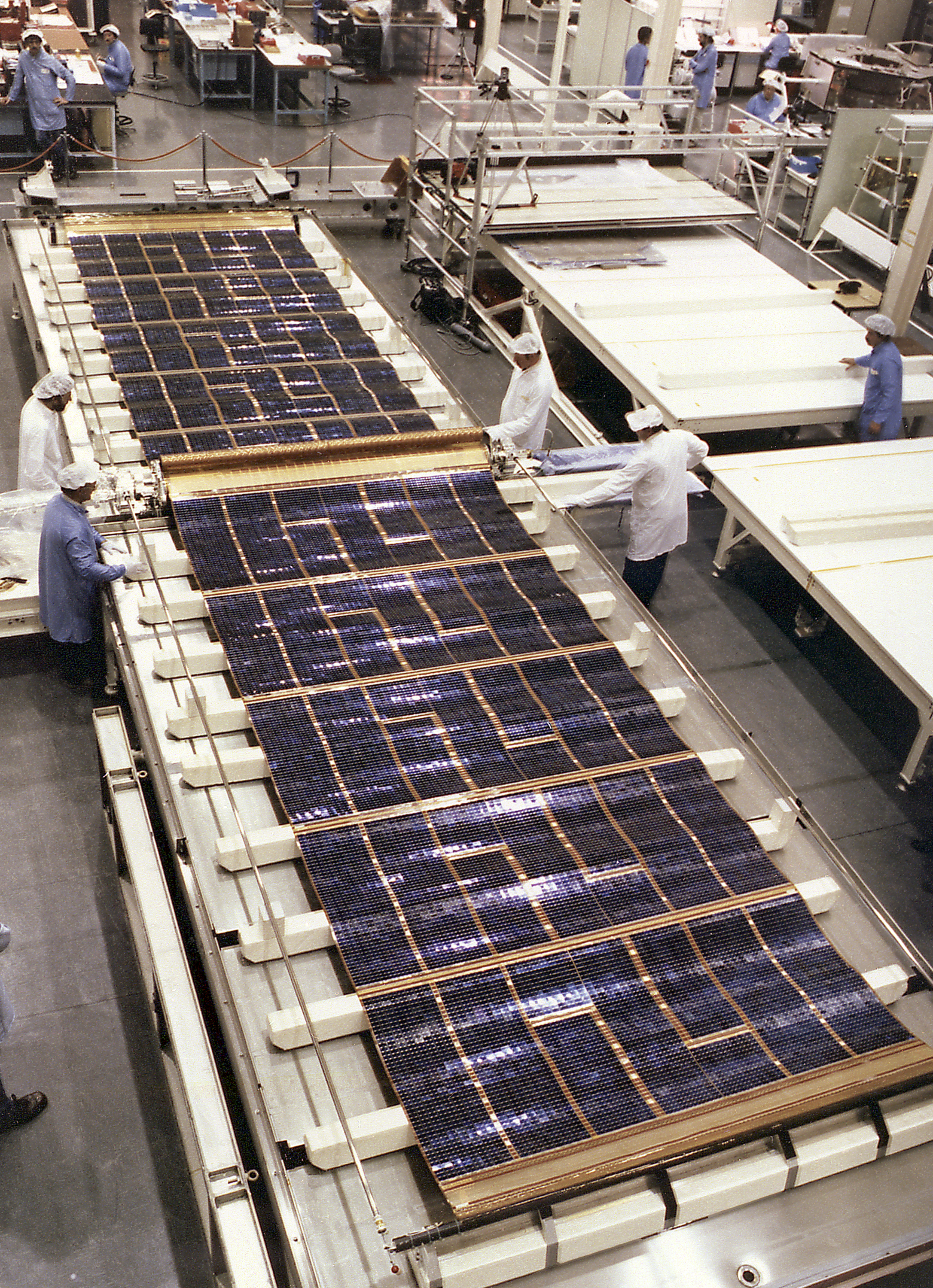
HST Solar Array, Secondary Deployment Test
This is a view of a solar cell blanket deployed on a water table during the solar array deployment test. The Hubble Space Telescope's solar arrays provide power to the spacecraft. The arrays are mounted on opposite sides of the spacecraft, on the forward shell of the Support Systems Module. Each array stands on a 4-foot mast that supports a retractable wing of solar panels 40 feet (12.1 meters) long and 8.2 feet (2.5 meters) wide, in full extension. The arrays rotate so that the solar cells face the Sun as much as possible to harness the Sun's energy. The Space Telescope Operations Control Center at the Goddard Space Center operates the array, extending the panels and maneuvering the spacecraft to focus maximum sunlight on the arrays. The purpose of Hubble, the most complex and sensitive optical telescope ever made, is to study the cosmos from a low Earth orbit. By placing the telescope in space, astronomers are able to collect data that is free of Earth's atmosphere. Hubble's solar array was designed by the European Space Agency and built by British Aerospace. The Marshall Space Flight Center had overall responsibility for design, development, and construction of the observatory.
